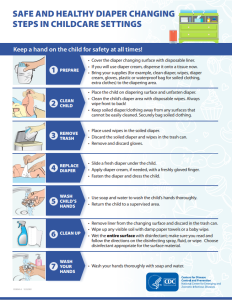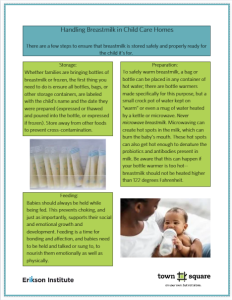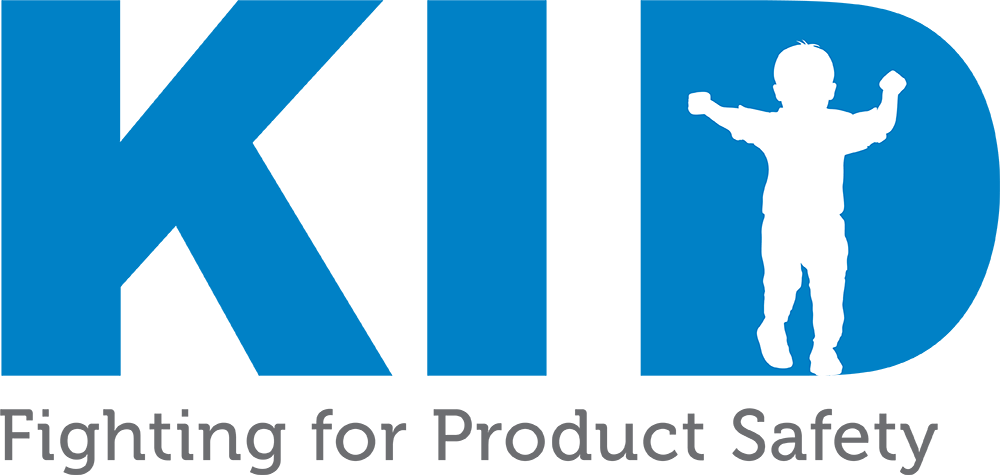Often families, especially for their first child, are worried about sending their baby to group care, having absorbed the idea of a single primary caregiver being the ideal. But Babies in Groups: Expanding Imaginations, by Ben S. Bradley, Jane Selby, and Matthew Stapleton, is a painstakingly researched book demonstrating how infants are socially engaged and engaging creatures from birth, and from six months can observably take pleasure in interacting with other babies. This article from The Conversation offers some of their findings, and would make a great addition to your enrollment packet!
For reflection:
How do the babies in your care participate in the group?
In what ways can you facilitate their participation?
Has this article changed the way you see their interactions?
This short article will give you five foundational mathematical concepts to pay attention to an emphasize in your conversations and games with infants and toddlers.
Handling, storing, heating, and feeding breastmilk can feel like it has a lot of steps.
This printable PDF reviews how to safely provide breastmilk to infants whose families provide it, including storage, preparation, and feeding. Below, you’ll also find a video from Head Start showing an Early Head Start teacher bottle feeding an infant and demonstrating responsive feeding and interaction with a baby at feeding time.
Gestión de la leche materna en cuidado de los niños
What do you notice in this video of the Early Head Start teacher feeding the baby? How does the baby respond to her actions and speech?
In the RIE philosophy, there is a great emphasis on ensuring that caregiving times are relaxed and enjoyable for children and their caregivers. While this might be a dramatic reframe for some– is it really possible to enjoy changing diapers? — it can make mundane tasks much more pleasant.
Family child care is a unique profession– some days drag out, but many others fly by. Taking any opportunity to slow down and be mindfully present with the children is a way to build relationships with each child and ensure that there is time each day spent in warm individual interactions.
The major criterion that makes an activity “want something” quality time is that the adult has an agenda for the child to participate in. This is typically participating in a care task like diapering/toileting, feeding/eating, or dressing. How can these sometimes stressful occasions become enjoyable for everyone? The answer is simple: play!
When a child is getting changed, songs and nursery rhymes (“This Little Piggy”, “Hickory, Dickory, Dock”) have natural gestures that can be incorporated into dressing the child. Taking some pressure off of meals and offering conversation or even calm games for older toddlers, like “I spy on my plate” or discussing the attributes of the meal.
It’s normal for a child to offer some resistance during care times; babies and toddlers try to roll away from diaper changes, or spit out food, or tantrum to avoid getting dressed. Approaching the child in the spirit of collaboration and fun, while not an immediate “cure” for these behaviors, will change the tone of these interactions over time.
Reflection Questions:
- What “want something” times are most difficult right now?
- Consider a child you have struggled to connect with, or who struggles when participating in care tasks: how and when could you use want something quality time to build that relationship?
When planning activities for mixed-age groups, there are a number of considerations to make. Keeping all children safe, engaged, and supported takes a lot of practice and skill! Thankfully, there are a number of ways to provide individualized experiences within one activity to meet the needs of all children.
- Safety first: Modify the environment so infants and toddlers cannot access choking hazards that older children may be using. This might involve baby gates or having the older children work on an inaccessible tabletop while infants and toddlers work on a lower surface.
- Plan for complexity: if you are planning a painting activity, have different materials available to accommodate and build on different skill sets. Infants and toddlers can fingerpaint, while preschoolers and school-age children can use brushes of different sizes and experiment with purposeful color mixing.
- Allow for “helpers”: preschoolers and school age children can feel pride and competence when given tasks to help adults– especially to distinguish themselves from the “babies.” Giving older children the responsibility of helping to maintain their own materials (washing paint brushes, putting away blocks, wiping up spills) is beneficial for their development and will help them feel ownership over the space and materials.
- Make a “yes space”: There are going to be times that the older children need more attention or are engaging in an activity too complicated for toddlers. Having a smaller space where the younger children cannot get into the older children’s activities becomes important at these times. While it must be in a space that can be supervised at the same time as the older children, it should be fully child-proofed and stocked with items that will keep the younger children’s interest.
With all of the challenges working with mixed age groups can present, there are so many benefits for the younger children, who get to spend their days with role models, and the older children who get to practice being compassionate and caring friends.
This printable PDF from the CDC
outlines the steps involved for a diaper change that minimizes the chance of spreading pathogens such as pinworms or hand foot and mouth. These are crucial to the health and safety of the provider and all of the children they care for.
What it doesn’t show is the incredible opportunity for relationship building that is also present at every diaper change. How often are you just a foot or so away from the child’s face for such a focused time? Spending diaper changes talking to the child is one high-impact way to build relationships, and also make the diaper changes themselves easier. What toddler is going to try to roll or wrestle away when one of their favorite people is talking to them, or playing “this little piggy” with their toes?
It doesn’t add a significant amount of time to really pay attention to the child being changed, but the payoff in peaceful diapering and overall relationship can’t be overstated!
Early Childhood Education can have a lot of buzzwords and misunderstandings. This “Philosophy Spotlight” series intends to introduce you to the origins of a number of currently used philosophies directly from the writings of their founders and accomplished practitioners, as well as modern practices and ideas associated with these philosophies. Note that many of the philosophies and philosophers we reference in the US are Euro-centric in origin. I will do my best to integrate philosophies of development and learning from a more diverse body of knowledge, for the benefit of all children and providers. You’ll notice a significant amount of overlap between philosophies, as well as some stark differences. Use these articles to consider your own approach to early education, and maybe refine how you see you work and design your program. These are intended to be broad overviews; please see the references if you’d like to learn more about each one!
Origins: After Italy had been destroyed as a fascist power during World War II, there was a movement to rebuild the country in a way that would support its citizens in pursuit of freedom from oppression. The first Reggio Emilia school was built by families seeking to create a new school for their children as they rebuilt their community. They quickly grew into a network of preschools and infant toddler centers through the 1960s and 70s. In 1991, Newsweek called the Diana school, one of Reggio Emilia’s preschools, one of the best schools in the world.
Modern Regulating Bodies/Standards: The term “Reggio Emilia Approach” is trademarked, leading to many programs describing their philosophy as “Reggio Inspired”, although there is no regulating body outside of Italy that controls the use of the term. A school cannot be certified as a Reggio Emilia school, nor can a teacher be a certified Reggio Emilia teacher. There are organizations in the International Network that further the spread of information about the Reggio Emilia approach, but do not serve as regulators.
Theories and Theorists:
Loris Malaguzzi is considered the founder of the Reggio Emilia approach. He was a psychologist trained in pedagogy and had previously co-founded a school for children with disabilities and learning difficulties. While working there, he was approached to collaborate with the new network of preschools and infant-toddler centers.
Values:
Children are active protagonists in their growing processes: Every child can and has the right to create their own experiences as an individual and member of a larger group.
Progettazione/Designing: Education is shaped by the design of environments, participation, and the design of learning situations. It does not happen to the same degree in predesigned programs or curricula that are premade.
The hundred languages: The Hundred Languages of Children are a metaphor for the potential of children and their thinking and creative processes. It is a central value to honor all of children’s forms of self-expression equally.
No way. The hundred is there: A Poem by Loris Malaguzzi (translated by Lella Gandini)
No way. The hundred is there.
The child
is made of one hundred.
The child has
a hundred languages
a hundred hands
a hundred thoughts
a hundred ways of thinking
of playing, of speaking.A hundred always a hundred
ways of listening
of marveling, of loving
a hundred joys
for singing and understanding
a hundred worlds
to discover
a hundred worlds
to invent
a hundred worlds
to dream.The child has
a hundred languages
(and a hundred hundred hundred more)
but they steal ninety-nine.
The school and the culture
separate the head from the body.
They tell the child:
to think without hands
to do without head
to listen and not to speak
to understand without joy
to love and to marvel
only at Easter and at Christmas.They tell the child:
to discover the world already there
and of the hundred
they steal ninety-nine.They tell the child:
that work and play
reality and fantasy
science and imagination
sky and earth
reason and dream
are things
that do not belong together.And thus they tell the child
that the hundred is not there.
The child says:
No way. The hundred is there.
Participation: Children are welcomed to participate in relationships, in the classroom and community. This is to give children the “feeling of solidarity, responsibility, and inclusion, and produce changes and new cultures” (Reggio Children).
Learning as a process of construction, subjective and in groups: Every child constructs their own knowledge, through conversation, research, and discussion.
Educational research: Adults interacting with children should see themselves as researchers and use their documentation as research into children, groups of children, and learning. Educators should be encouraged to continue constructing and reconstructing their knowledge and practices.
Educational documentation: Adults and children take videos, photos, and work samples to document the learning the children are engaging in. These documents are used to provoke discussion and through between educators, between children, and between educators and children together.
Organization: Time, space, and work are all organized to reflect the values of the school and projects.
Environment and spaces: Interior and exterior spaces are all designed and organized to interact with the people in the space, shape learning experiences, and inspire thought and creativity. Care of the environment is critical, and maintaining the aesthetics of the space is intended to create pleasure and joy in the people who use the space.
Formation/Professional growth: Professional growth is the right of individual educators and the whole group. In Reggio Emilia, professional development is part of educators’ working time, and occurs within staff meetings and the larger city, national, and international context.
Evaluation: The schools should be evaluated frequently by their coordinators, educators, community members, and families to ensure that they are meeting the needs of the children and families.
What You Might Observe in a Reggio Inspired Program:
Many Reggio Emilia inspired programs place a heavy emphasis on the arts, particularly visual representations and planning, along with guided exploration of visual arts materials. There will likely be documentation of children’s work hanging up for children and adults. Oftentimes, children in Reggio Inspired programs use more “loose parts” than traditional toys. As part of the Reggio value of designing, children are offered “provocations” which are curated sets of materials designed for children to explore and experiment with to provoke their thinking and extend their interests. Provocations can look like a tray with small balls and ramps; unwrapped crayons, leaves, and thin paper for printmaking; boxes, tape, and crayons to create with; or anything else that children might use to carry out experiments on their own interests.
Influence on Modern ECE Programs at Large:
Many programs use pedagogical documentation to show families what children have been participating in. Loose parts play is also becoming much more widespread in early childhood programs.
Questions for Your Reflection:
When you think of yourself as not just an educator, but a researcher of children, how does that influence your perspective on your work? What would you do differently as a researcher than as a teacher?
How does documentation differ from any other display of children’s work?
When you think about your environment, does it work with or against your program’s mission and vision? What would you like to change?
We know that babies learn language from being spoken and sung to, but new research states that young babies learn more from the rhythm and the way we speak than the individual sounds we’re making.
Why reading nursery rhymes and singing to babies may help them to learn language | University of Cambridge
This is just more reason to keep singing and reading to even the youngest babies throughout the day!
Remember, singing to the baby in front of you is much more powerful than playing recorded music.
“High cognitive scores during infant-directed singing suggested that engagement through song is just as effective as book reading or toy play in maintaining infant attention, and far more effective than listening to recorded music,” said [researcher Shannon] de l’Etoile. Mothers and infants connect through song | ScienceDaily
List of resources for baby sleep safely and ways to reduce the risk of Sudden Infant Death Syndrome (SIDS) and other sleep-related causes of infant death. Vital information for all that care for babies.
- Tips for Creating a Safe Sleep Environment for Infants in Child Care
- Infant Safe Sleep Policy Template






